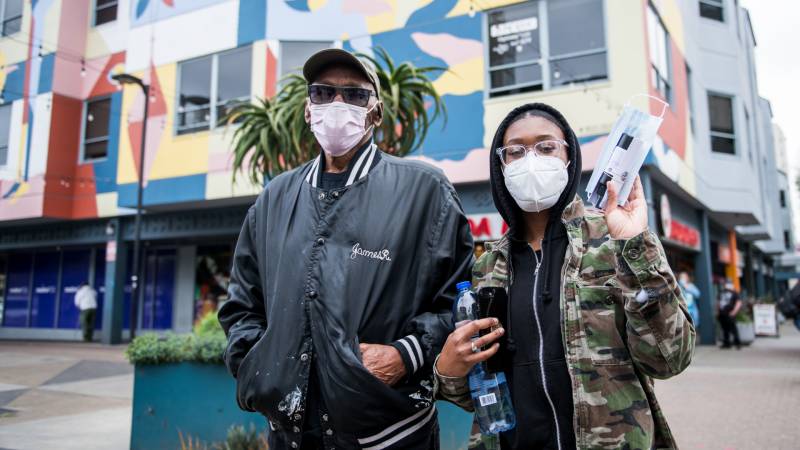Panic, denial and fear. Reaching out to others for connection. Those are some of the reactions journalist Amanda Ripley documented in her 2008 book, “The Unthinkable” which looked at how people behave in major disasters like floods or terrorist attacks. Today, she says she is seeing similar reactions to a slower-moving crisis: the coronavirus pandemic. Forum talks to Ripley about how individuals and governments respond to disasters, and how we can avoid squandering Americans’ willingness to sacrifice and help during this time.
How We Respond to Disasters
53:18

Chelsea Riley (right) and her father James Riley line up to receive free hand sanitizer and a face mask in the Fillmore on April 17, 2020. The sanitizer is manufactured by The Science Policy Group at UCSF. (Beth LaBerge/KQED)
Guests:
Amanda Ripley, contributing writer, The Atlantic; author, "The Unthinkable: Who Survives When Disaster Strikes—and Why"
Sponsored